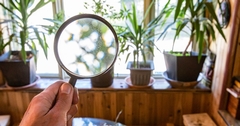
In the quest for a healthy and comfortable home, indoor air quality (IAQ) plays a pivotal role. With many of us spending a significant portion of our time indoors, it's crucial to ensure that the air we breathe is clean and free from pollutants. In this blog post, we explore effective strategies for improving indoor air quality, focusing on the essential elements of filters, ventilation, and purification.
Understanding Indoor Air Pollution
Common Indoor Pollutants
Indoor air can be laden with pollutants such as dust, pet dander, pollen, mold spores, and volatile organic compounds (VOCs) emitted by household products. Inadequate ventilation and sealed indoor spaces contribute to the accumulation of these pollutants, leading to compromised air quality.
Health Impacts
Prolonged exposure to poor indoor air quality can have adverse effects on health, causing respiratory issues, allergies, and exacerbating conditions like asthma. Additionally, long-term exposure to certain indoor pollutants has been linked to more serious health concerns.
Filters: The Frontline Defense
HVAC Filters
Heating, ventilation, and air conditioning (HVAC) systems are equipped with filters designed to capture airborne particles. Regularly changing or cleaning these filters is a simple yet effective way to prevent the circulation of dust and allergens throughout your home.
High-Efficiency Particulate Air (HEPA) Filters
Consider upgrading to HEPA filters, which are designed to trap smaller particles that standard filters might miss. HEPA filters can capture particles as small as 0.3 microns, effectively removing allergens and even some bacteria from the air.
Portable Air Purifiers
For targeted filtration in specific rooms or areas, portable air purifiers with HEPA filters can be a valuable addition. These devices can help reduce allergens and improve air quality in spaces where HVAC systems might be less effective.
Ventilation: Infusing Fresh Air
Natural Ventilation
Open windows and doors whenever possible to allow for natural ventilation. This not only brings in fresh outdoor air but also helps expel indoor pollutants. Cross-ventilation is particularly effective in flushing out stagnant air.
Mechanical Ventilation Systems
Consider installing mechanical ventilation systems, such as exhaust fans or energy recovery ventilators (ERVs), to ensure a constant flow of fresh air. ERVs, in particular, exchange stale indoor air with fresh outdoor air while retaining energy, making them energy-efficient solutions for improving ventilation.
Regular Air Exchange
Encourage regular air exchange by using exhaust fans in bathrooms and kitchens. This helps remove moisture and pollutants at the source, preventing their spread to other areas of the home.
Purification Technologies
UV-C Light Purification
Ultraviolet (UV) light with a wavelength of 254 nanometers (UV-C) has proven effective in neutralizing bacteria, viruses, and mold spores. UV-C light air purifiers can be integrated into HVAC systems or used as standalone units to enhance indoor air quality.
Ionizers
Ionizers release negatively charged ions into the air, which attach to positively charged particles like dust and allergens, causing them to fall out of the air. While ionizers can be effective, it's essential to choose models that do not produce ozone, a known respiratory irritant.
Activated Carbon Filters
Activated carbon filters are excellent for adsorbing odors and certain chemicals. These filters work by trapping and holding molecules, effectively removing unwanted smells and volatile organic compounds from the air.
Holistic IAQ Strategies
Plants as Natural Purifiers
Certain indoor plants, such as snake plants and spider plants, can act as natural air purifiers by absorbing pollutants and releasing oxygen. Incorporating indoor greenery is a visually appealing and biologically effective way to enhance IAQ.
Regular Maintenance
Consistent maintenance of HVAC systems, filters, and purifiers is key to their optimal performance. Regularly inspect and clean or replace filters, check ventilation systems, and schedule professional HVAC maintenance to ensure everything is operating efficiently.
Creating a healthy indoor environment involves a multi-faceted approach that combines air filtration, proper ventilation, and purification technologies. By investing in effective filters, embracing ventilation strategies, and incorporating purification technologies, homeowners can significantly improve indoor air quality. Breathing easy in your home not only contributes to your well-being but also creates a comfortable and welcoming living space for you and your loved ones.
